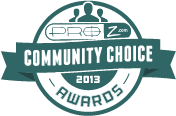Today we'd like to continue our tradition of quick posts with very simple tips that are easy to implement. As all of us are in the middle of the holiday season, we figured we'd keep it short. This blog post should take you no more than three minutes to read.
Interpreters are constantly working on their memory, as having great memory is key, especially for consecutive interpreting. We keep our memory sharp with all sorts of exercises, and one of our favorite ones is also quite fun, but it's actually harder than it looks.
Here's how it works: next time you go to the movies, keep track of the previews that are shown before the actual movie starts. Here in the United States it's usually five previews, but it can be up to eight. Don't write anything down (as that's sort of cheating!) and try to remember all previews in the right sequence until the end of the movie. Can you do it? We usually accomplish it by remembering keywords ("stupid movie based on a cartoon" or "lovely movie based on a best-selling novel" or "horror movie for teenagers") and traditionally do quite well on this. It's become a sport, and anyone who comes to the movies with us gets drawn into this, like it or not!
What do you think about this memory exercise, dear friends and colleagues? If you have other exercises to share, please do so by leaving a comment below.





.png)


.png)














